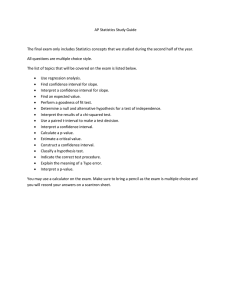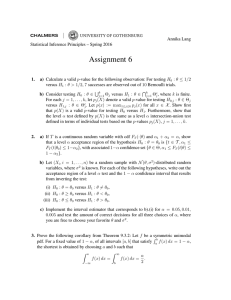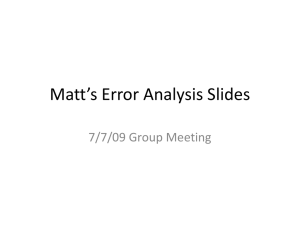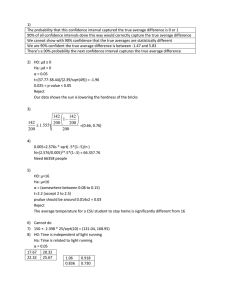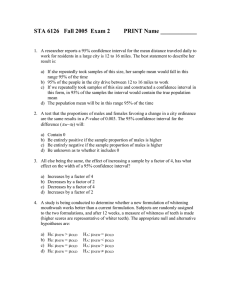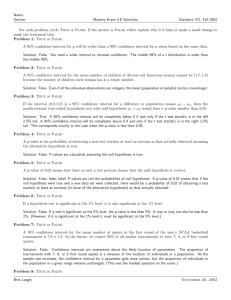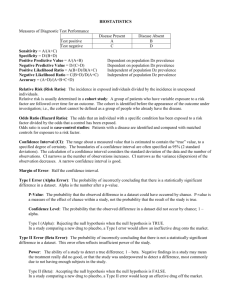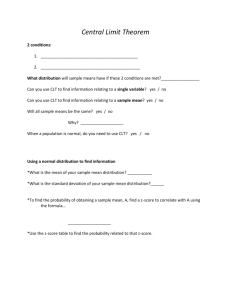AP Statistics: Hypothesis Testing & Confidence Intervals
advertisement
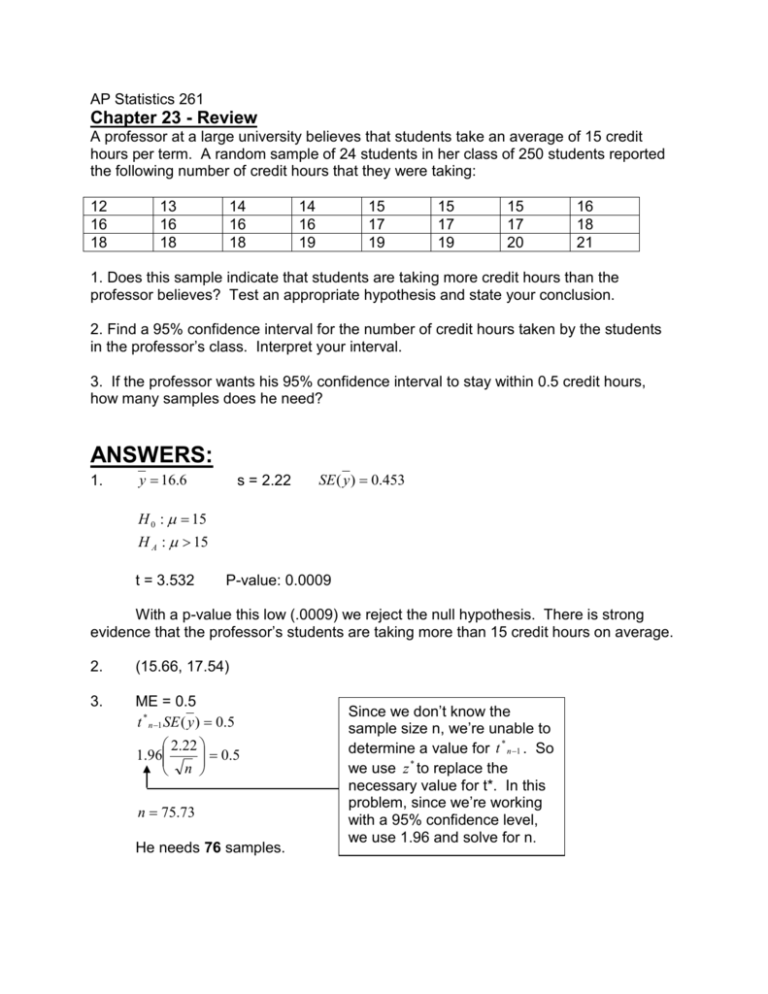
AP Statistics 261 Chapter 23 - Review A professor at a large university believes that students take an average of 15 credit hours per term. A random sample of 24 students in her class of 250 students reported the following number of credit hours that they were taking: 12 16 18 13 16 18 14 16 18 14 16 19 15 17 19 15 17 19 15 17 20 16 18 21 1. Does this sample indicate that students are taking more credit hours than the professor believes? Test an appropriate hypothesis and state your conclusion. 2. Find a 95% confidence interval for the number of credit hours taken by the students in the professor’s class. Interpret your interval. 3. If the professor wants his 95% confidence interval to stay within 0.5 credit hours, how many samples does he need? ANSWERS: 1. y 16.6 s = 2.22 SE ( y ) 0.453 H 0 : 15 H A : 15 t = 3.532 P-value: 0.0009 With a p-value this low (.0009) we reject the null hypothesis. There is strong evidence that the professor’s students are taking more than 15 credit hours on average. 2. (15.66, 17.54) 3. ME = 0.5 t * n 1 SE ( y ) 0.5 2.22 1.96 0.5 n n 75.73 He needs 76 samples. Since we don’t know the sample size n, we’re unable to determine a value for t * n 1 . So we use z * to replace the necessary value for t*. In this problem, since we’re working with a 95% confidence level, we use 1.96 and solve for n.
